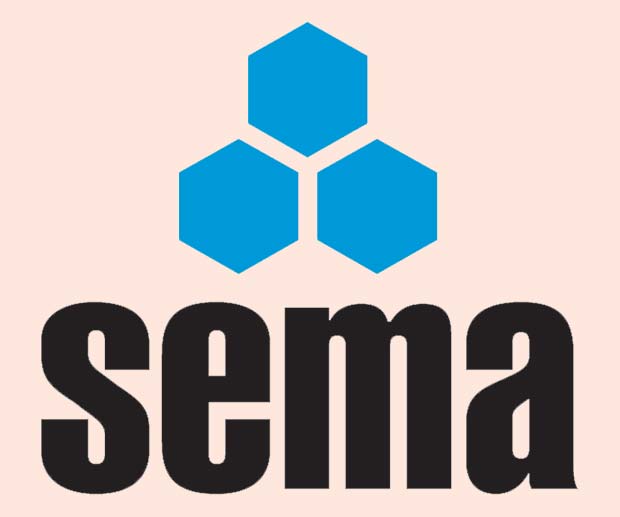Our first question this month asks about SWL notices and our second about welding to frames.

SWL Notice Query
Q. Our warehouse as-erected has 56 rows of racking, there are approximately 10 configurations. Do I have a legal responsibility to put a SWL notice on the end of each rack or can I reduce this to so each configuration has a couple of SWL sign installed?
A. It boils down to your specific risk assessment for operations I am afraid.
In theory as you say it is perfectly possible to mark-up areas of racking with a limited number of signs. We often comment that if all the rack in a warehouse is the same configuration and there is only one door through which all the comings and goings take place it could be argued that a single sign on the door is adequate to brief all the drivers of limitations involving placing goods into that racking! Unfortunately even in this situation there can be a risk that a single sign gets damaged and no information is then available to any of the drivers!
The risk from a limited number of signs is that a driver unfamiliar with the layout places the wrong pallets in the wrong locations and grossly overloads a particular area causing a collapse and then claims it was not his fault as he did not know that particular rack had a different capacity than the area in which he normally worked! Effective signage removes this excuse. If you have a computer managed system which takes account of pallet weights before allocating a storage location to a particular pallet then this becomes somewhat irrelevant. In effect the driver would never have to check carrying capacity unless a very heavy pallet turned up that he due to his experience he would never place in a particular location. Driver experience becomes a last ditch check for safe handling in such circumstances.
As you can see there is a lot involved depending on the sophistication of your system and with 56 aisles and 10 configurations it sounds a major installation. There is also more than a little chance that if we look at the system a couple of years down the road there will be 20 configurations or only 5, each possibility of which will requires amendments to racking and load signage.Guidelines of Weight of Cartons Stored at Height.
Welding to Frames
Q. We have a client with some older Redirack frames to which they have welded 2″ sq mesh to the rear of the rack directly to the frame uprights and the beams. What is SEMA’s stance/position/ advice on this?
A. In short, do not do it! There are two main reasons:- The first is that a lot of racking used to be made from cold reduced steel (and still is) where the tensile strength is enhanced by squashing the thickness of the material to make it significantly stronger. Unfortunately heat from welding operations can anneal the steel which returns it to its original reduced strength. Very specific welding techniques are needed to lay weld down quickly without the parent metal having time to absorb the heat and anneal. All a very specialist procedure which most welders who have never worked in the racking business are unaware of. Second reason is that the pallets should overhang the back beam (and the front one) by 50mm to allow for a tolerance on placement accuracy. From what you say this will not be possible as the mesh will be flush with the back face of the beam and the back face of the upright where it is welded which means the pallet cannot be located in its ideal position. It could therefore protrude 100mm out into the aisle which would not be good practice. Similarly the mesh could end up being used as a backstop for which it is not designed and neither is the beam or upright designed to take horizontal placement loads of that magnitude. This client is likely therefore to be unknowingly overloading both beams and uprights!
The 2019 SEMA Safety Conference has been scheduled for Thursday, 31 October; the venue will be the National Motorcycle Museum, Solihull.
If you have a query send it to us and we will do our best to have it answered.
SEMA runs a one-day safety course on Rack Safety Awareness and Inspection. These courses are aimed at end users, giving an indepth look at the need for inspections, how to conduct an assessment and what actions to take when this is completed.
SEMA Approved Rack Inspectors Qualification is aimed at professionals who conduct rack surveys as an integral and significant part of their duties. It involves delegates undertaking an in-depth SEMA Course, together with an exam and assessment. CPD will be an important part of the qualification, demonstrating to end users that SEMA Approved Inspectors maintain a high professional standard.
SEMA has 26 publications in stock – Codes of Practice, ‘Guides’ and European documents. SEMA runs a USERS Club designed to be of benefit to purchasers and users of storage equipment. Members receive newsletters, access to specialised events and discounted rates on publications and codes of practice.
SEMA




Comments are closed.